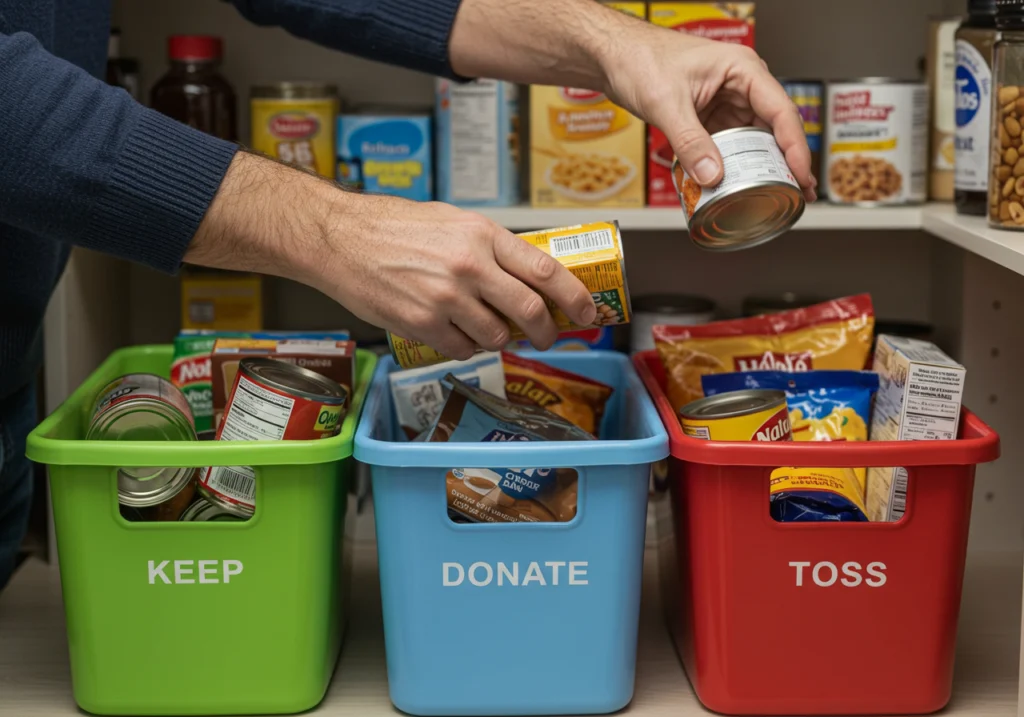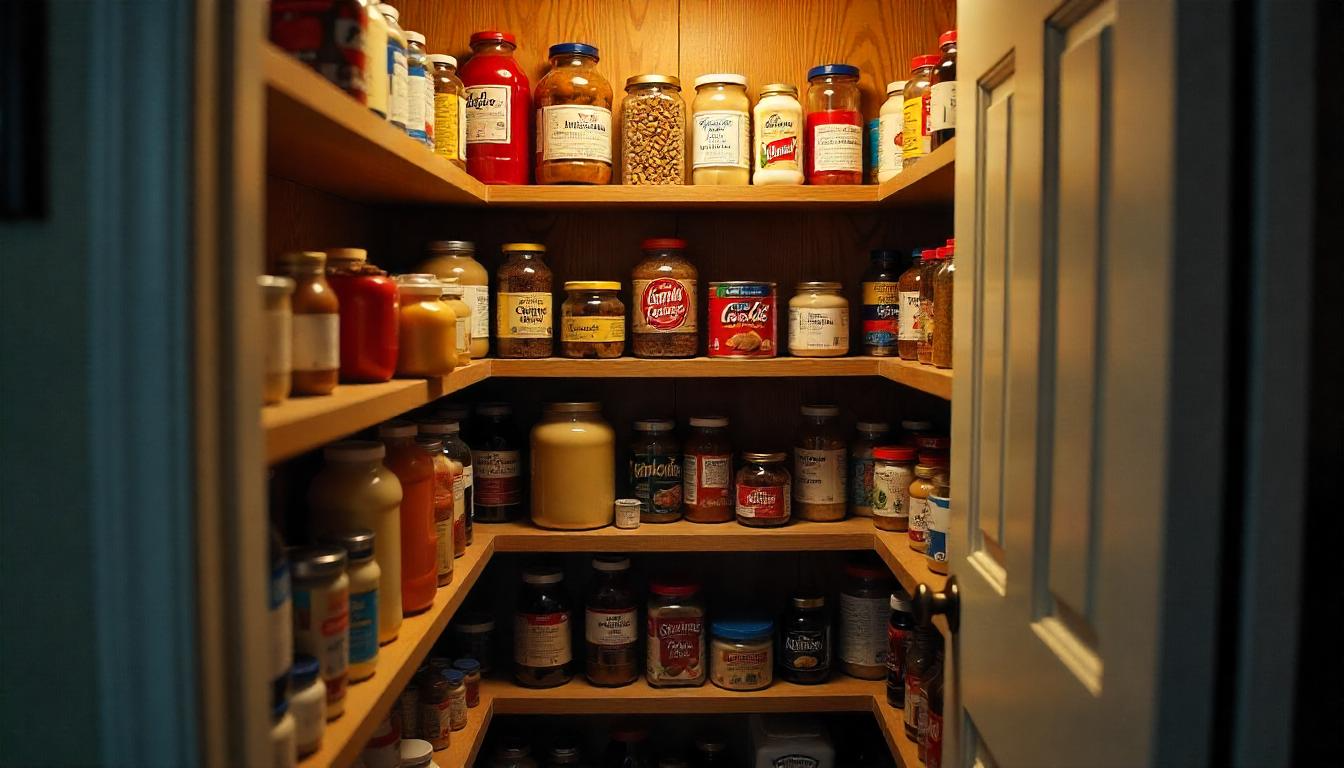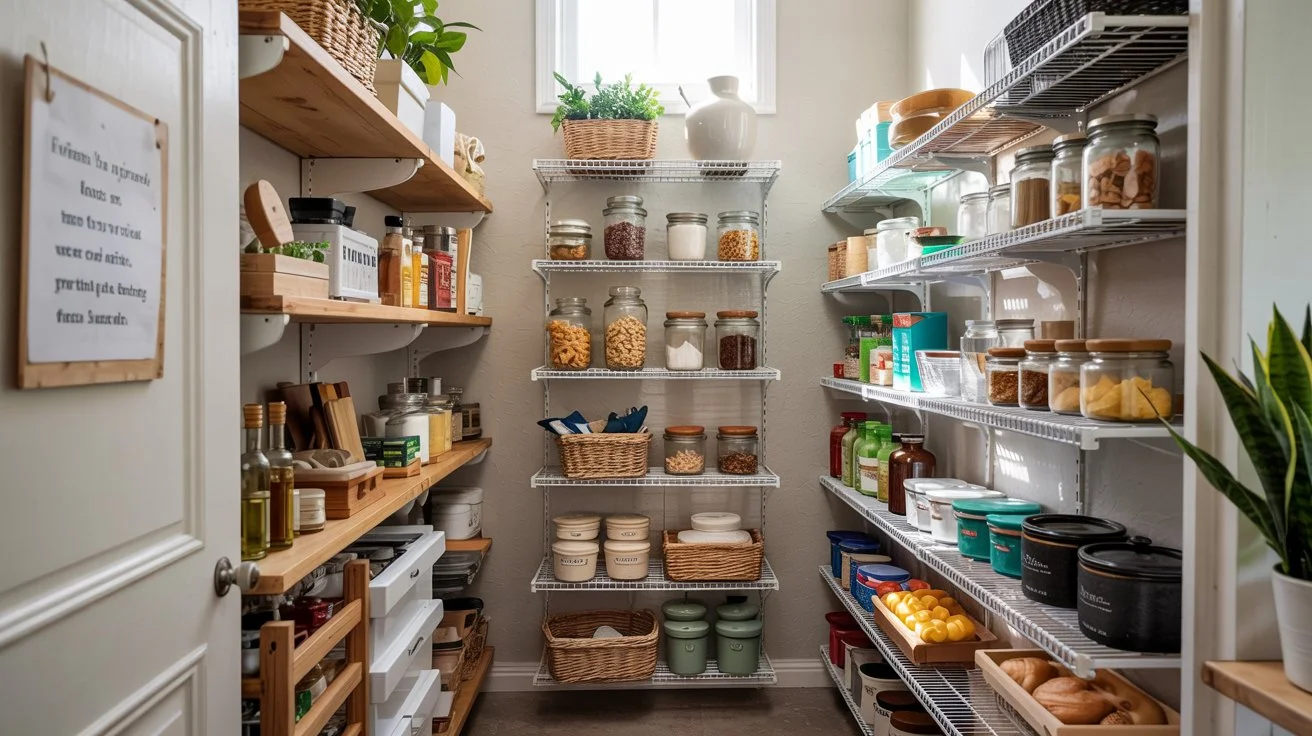Small Pantry Organization Ideas: Stunning Secrets to Simplify
A friendly welcome to your cluttered-cabinet rescue mission! If you’ve ever found yourself digging through mismatched cans or bumped your head on an overstuffed top shelf, you’ll love these Small Pantry Organization Ideas to simplify your life and streamline meal prep. Read on to declutter, containerize, and zone your way to a calmer kitchen in just a few easy steps.
Introduction: Find Calm in the Chaos of a Tiny Pantry
Pantry doors that won’t close, cereal boxes bursting at the seams, and mystery jars lurking in the back—sound familiar? You’re not alone. Small pantries can feel like black holes for snacks and staples, but with the right approach, you’ll transform that chaos into an efficient, easy-to-use space. In this post, we’ll cover how to declutter smartly, choose the best storage containers, maximize every inch with vertical and pull-out solutions, and set up zones that make daily life a breeze. By the end, you’ll know exactly how to simplify your small pantry and keep it that way—no more snack avalanches, promise!
Declutter First—Make Room for What Matters
Before you buy a single bin, start with a blank slate. Decluttering is the foundation for any great pantry revamp.
Toss Expired Items and Duplicates
Grab three boxes or bins: Keep, Donate, Toss. Check every can, bag, and box for expiration dates—if it’s past its prime or you bought two jars of jam you’ll never finish, it goes! This “one in, one out” rule helps you maintain order long after your makeover.

Categorize What’s Left
Group like with like—dry goods in one spot, snacks in another, baking ingredients together. You can even create a simple spreadsheet or use a pantry-inventory app to track what you have, reducing impulse buys and food waste.
See our guide to Pantry Inventory Management to learn more!
Take Measurements Before You Buy Bins
Measure shelf widths, depths, and heights to avoid bins that don’t fit or wasted vertical space. Jot those numbers down, then shop for containers that make the most of every inch. No awkward gaps, no bins you can’t stack—just a snug, efficient setup.
Maximize Every Inch of Space with Small Pantry Organization Ideas
Small pantry organization ideas aren’t just about neat bins—they’re about squeezing every drop of functionality out of your space. Here are some of my favorite ways to turn tight corners into organized gold:
Use Vertical Storage Solutions
When it comes to small pantry organization ideas, going up is your best friend. Think stackable pantry bins, tiered risers, and wall-mounted wire shelves. Over-the-door spice racks keep tiny jars visible, while risers let you grab that back-row can at a glance.
Try Pull-Out Bins and Drawers
One of the simplest small pantry organization ideas is to swap deep, hard-to-reach shelves for slide-out baskets. Clear plastic drawers on wheels turn your pantry into a mini showroom—no more fishing for that bag of lentils hiding in the shadows.
Add Undershelf Baskets and Hooks
Don’t forget the underside of your shelves: drop-in baskets are perfect for snack packs, and hooks along side walls can hold coffee mugs, reusable bags, or mesh produce pouches. These small pantry organization ideas help you reclaim every inch of shelf real estate.
Learn more about undershelf solutions at ShelfGenie.
Choose the Right Pantry Storage Containers
Choosing the right containers for your pantry is one of the most effective small pantry organization ideas. Whether you prefer glass or plastic, the key is to select clear, airtight containers that keep your food fresh and make it easier to spot exactly what you need.
Airtight Containers for Freshness
Glass or BPA-free plastic containers keep oats, rice, and pasta fresh longer and let you spot what you need instantly. These containers are a game changer when it comes to organizing bulk items like dried beans and grains. Check out The Container Store’s pantry collection here.
Label Everything
Don’t forget to label your containers! This simple step ensures that you always know what’s inside, and it makes your pantry look neat and organized. Consider using chalkboard labels or even clear tape for a minimalistic approach.
Create Easy Zones for Daily Use
Zoning turns your pantry into a workflow-friendly command center.
Set Up a Grab-and-Go Snack Station
Place kid-friendly snacks in a low basket or bin with handles so little hands can help themselves (and avoid constant “Mom, where’s my…” queries).
Group Meal Prep Essentials Together
Store oils, frequently used spices, and grains in one accessible spot. A lazy Susan or small caddy keeps these items corralled and within arm’s reach when chopping and stirring.
Designate a Backstock or Bulk Storage Zone
Put overflow items—extra flour bags, canned goods, bulk-buy rice—on a high shelf or at the back, clearly labeled and out of the way. You’ll keep clutter at bay and know exactly when it’s time to restock.
Conclusion: Your Simpler, Smarter Pantry Starts Today
There you have it—your action plan to conquer clutter, maximize space, and create a pantry that works for you, not against you. Start by decluttering, then measure, containerize, and zone. Even one small change—like adding pull-out bins or labeling shelves—will make a world of difference. Ready to simplify? Grab your measuring tape and your favorite bin style, and let’s get organized!
Pro Tips
FAQs
Q1: What’s the easiest way to measure my pantry for new containers?
A: Use a tape measure to note height, width, and depth of each shelf. Jot these down on paper or a notes app before shopping.
Q2: How often should I do a pantry purge?
A: Aim every 3–6 months, or whenever you tackle your larger kitchen clean-up. Seasonal swaps (summer vs. winter baking) are great triggers.
Q3: Can I use DIY containers instead of buying new ones?
A: Absolutely! Repurpose clean glass jars, cereal bags, or cardboard boxes—just add labels for clarity.
Q4: How do I keep my kids from making a mess again?
A: Set up a designated snack bin they can reach and involve them in the organizing process—it boosts buy-in and responsibility.


